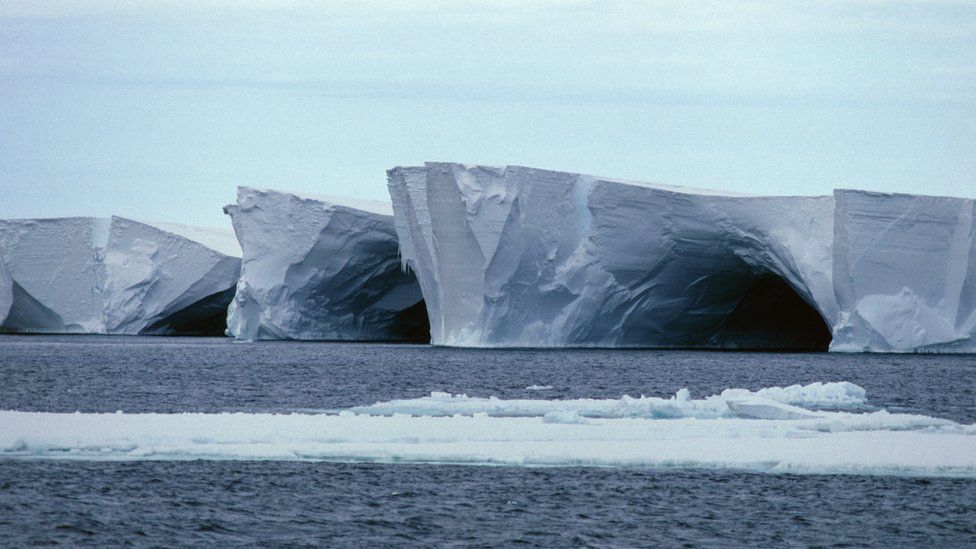A new model developed by researchers at the California Institute of Technology and NASA’s Jet Propulsion Laboratory (JPL) suggests that Antarctica’s ice could melt at an accelerating rate, which could help speed up the rate at which ocean levels are rising.
The researchers say their model takes into account the often-overlooked ocean current that flows along the Antarctic coast, as well as simulating how quickly freshwater, which is melting from the ice sheets, can trap warmer ocean waters at the ice base, resulting in Faster heating and thawing.
Ice caps are the product of the Antarctic ice sheet (ice cap), which is where ice extends beyond land and floats on the ocean. These caps, several hundred meters thick, act as a protective wall for the ice on the land, preventing all the ice from sliding into the ocean (which significantly increases the sea level).
However, warming in the atmosphere and oceans caused by climate change is increasing the rate at which these ice sheets are melting, threatening their ability to act as buffer structures for the rest of the ice in this Antarctic region.
“If this mechanism that we studied is active in the real world, it could mean that the rate of ice melt could be 20-40% higher than projections included in global climate models, which generally cannot simulate the strong currents circulating near the area,” Andy Thompson said. One of the authors of the study published in science progress.
As part of this work, the researchers focused on one region of Antarctica: the West Antarctic Peninsula. The continent is similar to a disk, except for the area where the peninsula extends into the ocean, especially in the lower and warmer latitudes. This is where the southern continent is severely affected by climate change.
The research team had previously deployed self-driving vehicles to the area, and the scientists used data from seals fitted with attached gauges to assess the temperature and salinity of the water and ice.
The model developed by those responsible for this study, which takes into account ocean current that often passes over radar, shows how freshwater from the peninsula’s melting ice rapidly circulates at the ocean’s surface and traps relatively warm, salty seawater. under the ice caps. This then causes the latter to melt from below.
Eventually, this phenomenon can spread along the coast of Antarctica, due to the current, which means that the melt is accelerating even thousands of kilometers from the place where it first felt warm.
“There are aspects of the climate system that we’re still discovering,” Thompson says. “As we are able to further develop our ability to model interactions between the ocean, ice sheets and the atmosphere, we can make more accurate predictions, with better control over uncertainty. We may need to revise some projections about sea level rise over the next few decades or the next century.” We will do this work in the future.”
Don’t miss any of our content
Encourage Octopus.ca

“Hardcore beer fanatic. Falls down a lot. Professional coffee fan. Music ninja.”






More Stories
SALES / PHOTO SALES – Nikon D850 “5 Star” Bare Body Photo Body at €2,539.00
Discovering a new turning point under the Antarctic ice sheet! What are the consequences?
Record number for an insect!